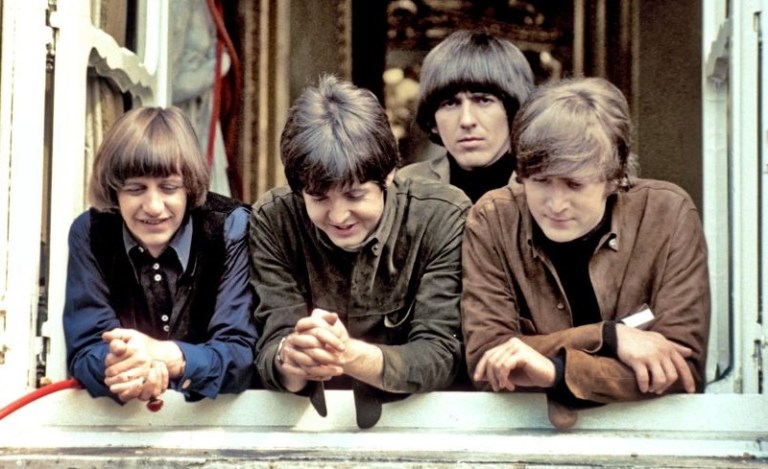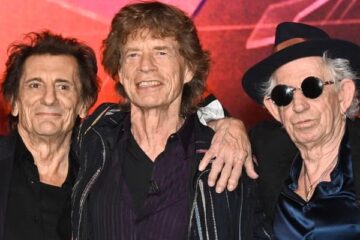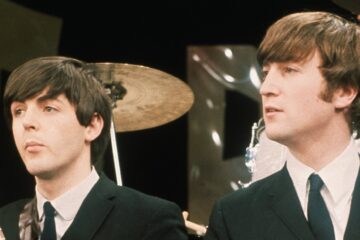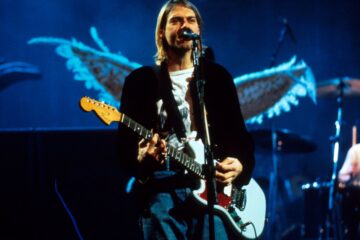News Ranking every closing song on The Beatles’ albums from worst to best
The Beatles were prolific. Very few artists have reached the dizzying heights that John Lennon and Paul McCartney especially reached as a songwriting duo, let alone what George Harrison and Ringo Starr would contribute. Between 1963 and 1970, the band released a staggering 12 studio albums and even more singles. The argument over which Beatles record is the best roars on as each new generation discovers the group. It also allows a rotating ream of healthy muso debates to ensue, like which record had the greatest closing number.
While the opening track of an album is important, no song is quite as vital or as sacred as the finale number. The last chance for greatness, it’s the closing remarks of the record. Allowing an artist to sum up everything that’s come before and pack one last musical punch to make a masterpiece is an important number.
Over time, the final track has taken lots of forms. For a while, it was the spot for another leading single. Typically, the first, second, and last tracks were held for the biggest hits to introduce the audience to their new record and then leave them happy as the needle drifted into the middle of the record on side two. As experimentation came in during the 1960s, the finale track began to be extended out into a spot for a longer, more experimental number. It’s often held for a slower, softer outro tune, like a lullaby at the end of the day.
Over their 12 albums, The Beatles tried all forms and styles. To varied effects and greatness, some finale songs are better than others. But as the closing spot provided a home for some of their biggest hits, it’s a tough ranking, but someone has to do it…
The last song on every album by The Beatles ranked in order of greatness:
12. Rubber Soul – ‘Run For Your Life’
The world would be a better place if this tune were never written or if we all, as a collective, acted like it didn’t exist. ‘Run For Your Life’ is a horrifying song. Worsened by modern ears and the context of John Lennon’s violent streak, this threatening number is a grimacing addition to their discography.
As the band repeat worse and worse threats, with the singer promising to kill his girlfriend if she ever strays, it’s a dampening ending to the otherwise incredible Rubber Soul record. It’s a shame that the band tainted the album when the previous track, ‘If I Needed Someone,’ would’ve been a worthy finale.
11. The White Album – ‘Good Night’
“Ringo wasn’t the best drummer in the world… Let’s face it, he wasn’t even the best drummer in The Beatles.” So goes the famous remark so often erroneously attributed to John Lennon. And on ‘Good Night’, he certainly isn’t the best singer in the band.
After the tracklisting chaos of The White Album, where rifts in the band meant that the album has a huge 30 songs with no thematic or sonic pathway, ‘Good Night’ is a strange finale. It would be impactful if it was shorter or simpler, but the extended lullaby, complete with the theatrical chorus, takes itself too seriously. The story behind the song is touching; it was written by Lennon as a lullaby for his five-year-old son, Julian. But as Starr whispers a final goodbye to album listeners, Lennon summarises the track perfect, “Yeah, corny.”
10. Yellow Submarine – ‘All You Need Is Love’
The Beatles are, unfortunately, one of those artists whose biggest and most famous songs happen to be some of their worst. ‘Yellow Submarine’, ‘Hey Jude’ and especially, ‘All You Need Is Love’ are up there as the worst examples too often used to display the talents of a genuinely brilliant and pioneering band.
At some point, ‘All You Need Is Love’ will have been catchy and fresh. That central lyric will have felt mind-blowingly new and excellently put at some point. But decades later, it’s tired. It is the audio equivalent of those weird quote signs mums have in their kitchen.
9. Help! – ‘Dizzy Miss Lizzy’
‘Dizzy Miss Lizzy’ is a fun addition to Help! It’s a perfect example of the band’s early interaction with true rock and roll, regularly covering the work of black American musicians. Written by Larry Williams, the track is a rock standard now and one that Lennon seemed to really love as he went on to cover it again with the Plastic Ono Band.
It’s also a perfect example of The Beatles’ early pattern of ending albums with a cover. Regularly recording versions so good they usurped the original, it’s what initially attracted the world’s attention to them. But while their take on ‘Dizzy Miss Lizzy’ is good, it’s not great.
8. Beatles For Sale – ‘Everybody’s Trying To Be My Baby’
Another example of the Beatles ending on a cover, but to better effect, comes on Beatles For Sale. Their version of the old 1936 track by Rex Griffin isn’t the most famous, though. Carl Perkins’ 1957 version remains the leading take on the track. But as big fans of Perkins’, the band gave it a good go.
Letting George Harrison lead, the guitarist delivers an impressive vocal. Their cover is mixed to perfection as Harrison’s vocals come through clean and crisp while also keeping the guitar solos soaring. A tune that gets your toes tapping and your hand clapping, it was a staple on their live set for good reason.
7. Let It Be – ‘Get Back’
The last song on the last Beatles album, ‘Get Back’ will always have a special place in the hearts and minds of fans. However, it’s a strange number. Despite being their final song, it brims with enthusiasm and potential, probably because Get Back was actually recorded before Abbey Road. So, instead of being heavy with goodbyes, there is something hopeful about the track.
In the Get Back documentary, it seemed to be a beautiful moment for the band. For the first time in a while, they genuinely came together to collaborate and figure the song out. As Paul McCartney begins riffing some bass guitar and lyrics, Starr claps along while Harrison plucks some improvisations. The band feel like a band again for a brief moment amidst the arguments, and ‘Get Back’ is the anthemic result.
6. With The Beatles – ‘Money’ (That’s What I Want)
‘Money’ is too often forgotten when talking about the best of The Beatles’ work. ”The best things in life are free / But you can keep them for the birds and bees,” Lennon sings in the opening line you’ve likely heard before. Originally a cover of the 1959 Barrett Strong track, The Beatles’ version later inspired a cover by the new wave band The Flying Lizards. The track always had a thoroughly modern and exciting energy, especially on The Beatles’ take.
An instance of pure rock from the band, it stands as proof of their genuine love for and engagement with the genre. They’re taking the rock and roll sound from their debut and making it heavier and darker. Fresh, screaming and endlessly catchy, it’s an underrated cut.
5. A Hard Day’s Night – ‘A Hard Days Night’
There are few Beatles tracks quite as iconic as ‘A Hard Day’s Night’. It was the ultimate soundtrack song to their debut and genuinely funny feature film of the same title. As the title and closing track to their third album, it further solidified their position as the biggest band on earth.
The second that opening chord rings out, the tone is set. It’s upbeat, exciting and youthful; all the things The Beatles were in those early days. Still just as catchy today as it was back then, it’s a song that does no wrong and never seems to stale.
4. Revolver – ‘Tomorrow Never Knows’
When people talk about The Beatles as an experimental force, this song is the strongest example. Despite being the closing track on Revolver, it sounds more like an opening, perhaps the beginning of their time as a truly experimental group. The introduction feels like a psychedelic wave, quite literally forcing you to “Turn off your mind, relax and float downstream”.
The song is one of their most lyrically sparse numbers, but as the instrumental spirals and glitches, circling around the new sounds of a new era, it signals everything that is to come for the band. Even if ‘Tomorrow Never Knows’ was released today, it seems like it would still be held up as a genuinely intriguing and pioneering piece which is a statement that can’t be said for a lot of their music. As the finale song, it seems to cast off everything that’s come before finally. The Beatles left behind their rock and roll days to surrender fully into experimentation.
3. Please, Please Me – ‘Twist and Shout’
It has to be up there. ‘Twist and Shout’ is one of the early Beatles tracks that started it all. As the anthemic finale of their debut album, it helped skyrocket their success and birth the era of Beatlemania. Another example of the band ending on a cover is their take on the rock and roll classic by Bert Russell, which positioned them as the UK’s answer to Elvis or the Isley Brothers.
Lennon had mixed feelings towards the track. For a while, he hated it “because I could sing better than that,” but later changed his tune, adding, “But now it doesn’t bother me. You can hear that I’m just a frantic guy doing his best.” Recorded in one take, it’s a moment in music history.
2. Sgt. Pepper’s Lonely Hearts Club Band – ‘A Day In The Life’
After ‘Tomorrow Never Knows’ signalled a new era of experimentation, ‘A Day In The Life’ saw it come to fruition in a form far grander and more interesting than anyone could have predicted. It’s a track that can only really be described as a musical feat. In just over five minutes, the band weaves between a slow acoustic start and a huge climax of a full orchestral breakdown.
As all four members played a role in crafting the track, it stands as a testament to their combined power. It’s a shining example of the dizzying heights they could reach, their ambition and their ability to see the bigger picture and make it happen. There are few Beatles songs quite as adventurous as this one, as the band moves between sections and sounds. Pulling together as a team, they make it seem easy despite the vastness of the song.
With the song moving between chugging verses, massive orchestral swells and psychedelic effects, it’s a culmination of everything great about the band, drawing from every iteration and era.
1. Abbey Road – ‘Abbey Road Medley’
Maybe this is cheating. If we were going solely on individual tracks, the final hidden number of ‘Her Majesty’ would be nowhere near the top spot and ‘A Day In The Life’ would wear the metaphorical crown. However, that isn’t how Abbey Road was intended to be heard.
Released back in 1969, it was a time long before shuffle buttons or streaming services. Instead, the vinyl record led the way. The needle would hit, and the album would play. On the second half of Abbey Road, the band purposefully created no gaps or differentiations between songs, letting the grooves run in one uninterrupted circle without a second of silence. Becoming known as the ‘Abbey Road Medley’, the second side of the album is intended to be heard as one long, extended song.
It’s a masterpiece. Themes, genres and lyrics weave in and out as the band explore a vast musical landscape. From the sparse and dreamlike ‘Sun King’ to the chant along classic rock of ‘Carry That Weight’, it was the band’s final gift to the world. Abbey Road would be released as the band’s last album, making this piece of music their goodbyes. In the closing moments, as the medley draws to a cinematic finale on ‘The End’, they send a clear message of affectionate parting; “And in the end / The love you take / Is equal to the love you make”.




